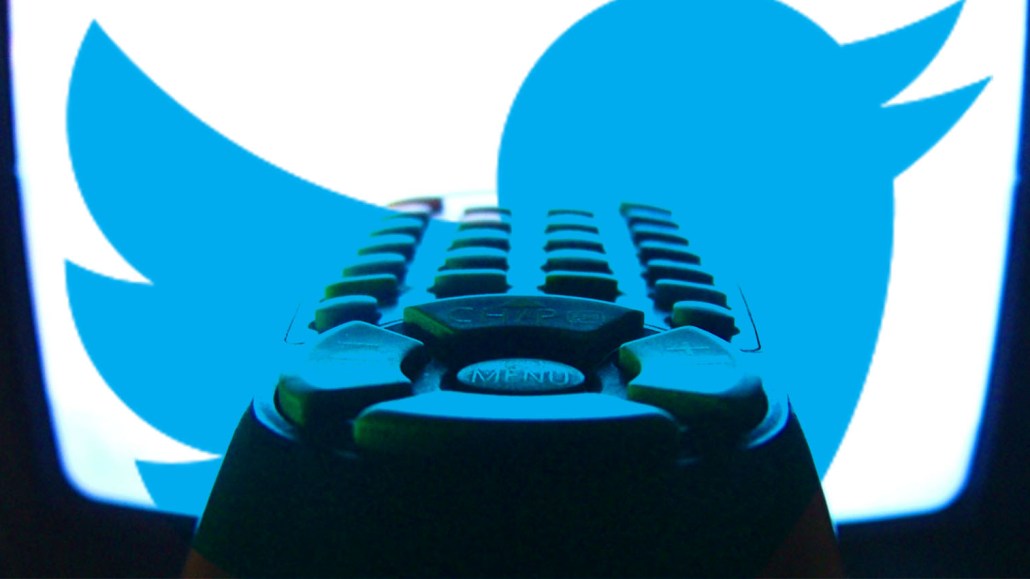
Digiday covers the latest from marketing and media at the annual Cannes Lions International Festival of Creativity. More from the series →
 This story is part of Digiday’s coverage of the 2014 Cannes Advertising Festival. It is sponsored by MediaMath, the creator of the TerminalOne Marketing Operating System™.
This story is part of Digiday’s coverage of the 2014 Cannes Advertising Festival. It is sponsored by MediaMath, the creator of the TerminalOne Marketing Operating System™.
Twitter’s pitch that its ads amplify brands’ messages beyond TV is now supported by agency-backed research.
The company, in conjunction with Starcom Mediavest Group, released on Tuesday the results of a six-month study into the effectiveness of pairing TV and Twitter ads, the upshot of which is that Twitter users are more receptive to advertising than the typical TV viewer and that pairing Twitter and TV makes for some powerful brand advertising.
Twitter-supported TV campaigns deliver a 50 percent greater ROI than TV-only campaigns, SMG’s Kate Sirkin said. Brand awareness was 6.9 percent higher among audiences to such campaigns while households exhibited a 4 percent increase in sales versus TV alone. Favorability rose 6 percent for users who interacted with a promoted tweet, meanwhile.
Curiously, Twitter president of global revenue Adam Bain was not using the study as evidence for why brands need to transition their ad dollars from TV to digital. Rather, the study should entice some brands to migrate “underperforming” digital dollars to TV (and Twitter).
“When you run both TV and Twitter together, we actually think budgets can go from the digital side to TV,” Bain told Digiday on Tuesday in Cannes. “Spending on Twitter makes your digital outcomes go farther, but your TV outcomes go farther as well.”
Bain positioning Twitter as the “bridge” between digital and TV makes it an alluring ad platform for brands looking to test whether their TV budgets might be better spent than solely on TV spots.
But that message is also integral for Twitter’s ad business, and thus the health of its business in general going forward. Twitter’s response to Wall Street worries about its decelerating user growth has been to emphasize that Twitter’s influence extends far beyond Twitter itself. That may well be true for celebrities taking selfies, but a promoted tweet is not as likely to generate the same kind of press coverage. And perhaps more damning was when an NBC exec said this April that Twitter had no effect on boosting ratings.
“Whether it be for marketers or broadcasters, we say the same thing: these two platforms go farther and faster together,” Bain said. “We now have great proof it not only works for the broadcasters but on the brand side as well.”
The study is just the first of many such reports on the interplay between TV and Twitter, Bain said. Research was the foundation of the multi-year partnership SMG and Twitter inked in April 2013, and it’s safe to say that SMG is happy with the early results and that SMG will be pushing its clients to increase their Twitter spend.
“The bigger insight to me is helping our clients do it better next time,” Sirkin said. “It’s still way early days with social TV.”
Below is an infographic displaying the results of the study.
More in Media

Podcast companies turn to live events to capture growing advertiser spend
The surge in the number of live podcast events in 2025 reflects a broader shift: advertisers are betting bigger on podcasts — not just as an audio channel but as a full-fledged creator economy play.

Media Briefing: ‘Cloudflare is locking the door’: Publishers celebrate victory against AI bot crawlers
After years of miserably watching their content get ransacked for free by millions of unidentified AI bot crawlers, publishers were finally thrown a viable lifeline.

How Vogue could navigate potential industry headwinds as Anna Wintour — who agency execs say made ad dollars flow — brings on new edit lead
Anna Wintour’s successor at Vogue will have to overcome the myriad of challenges facing fashion media and the digital publishing ecosystem.







